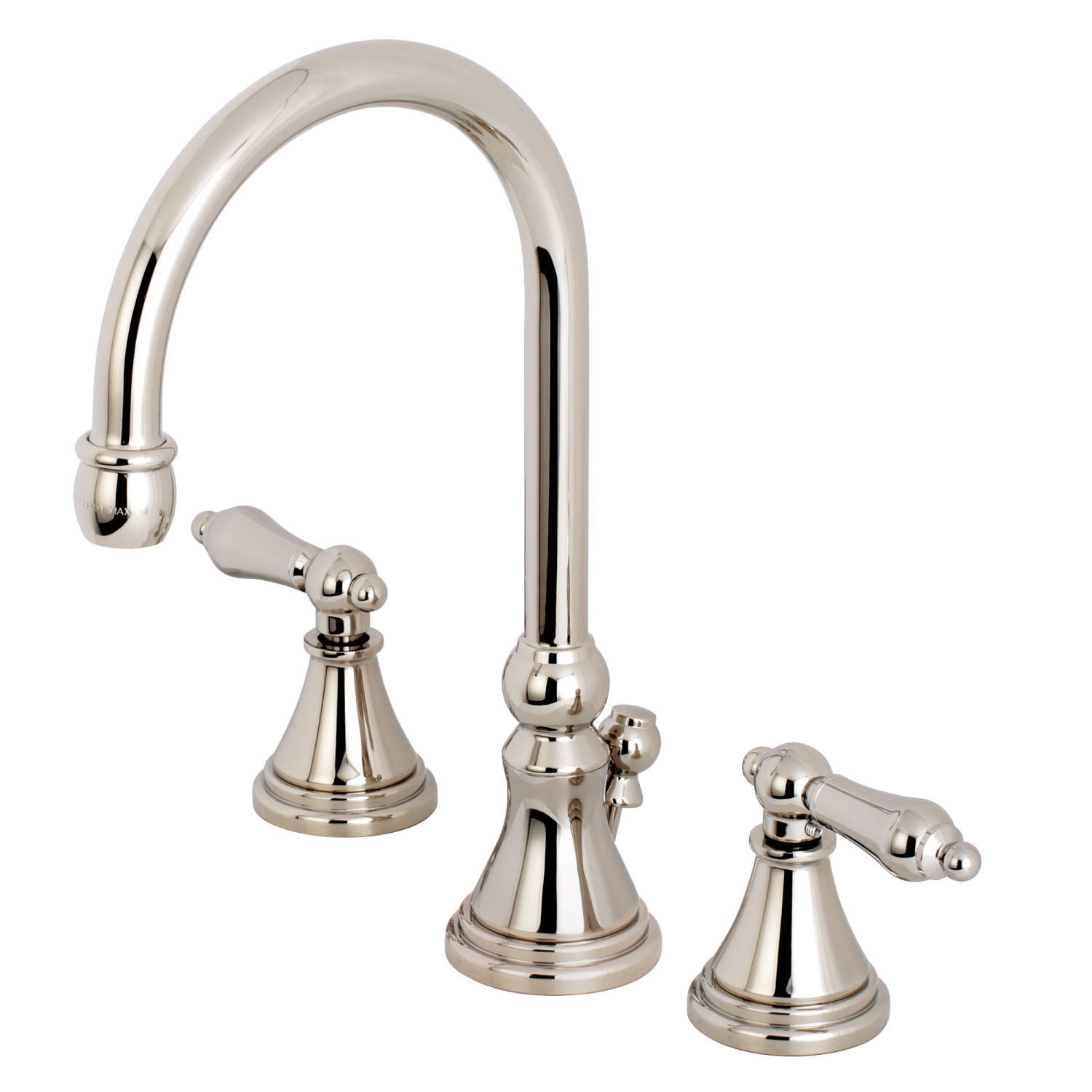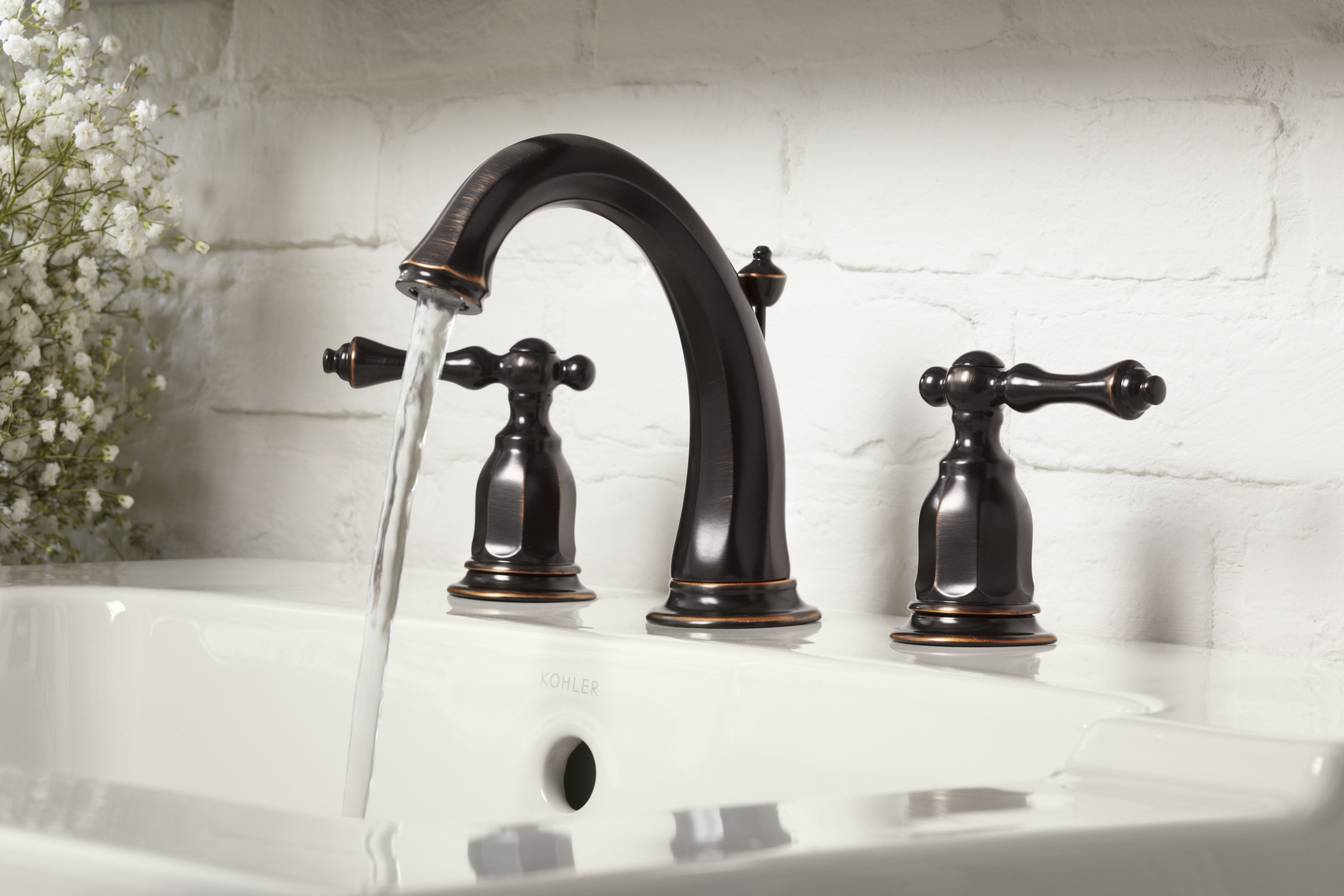History and Evolution of Old Style Bathroom Taps

Old style bathroom taps, often referred to as traditional or vintage taps, have a rich history that reflects evolving design trends, material advancements, and changing water management practices. From simple, utilitarian designs to more elaborate and decorative styles, these taps have evolved alongside architectural styles and societal preferences.
Origins and Early Evolution
The earliest forms of bathroom taps were rudimentary devices, often consisting of a simple spout attached to a pipe. These early taps were primarily functional, with little emphasis on aesthetics. As plumbing technology advanced in the 19th century, more sophisticated taps emerged. These early taps were typically made of brass or bronze, with a simple lever or knob for controlling water flow.
Styles and Designs
- Victorian Era (1837-1901): Victorian bathroom taps reflected the grandeur and opulence of the era. Elaborate designs, often featuring intricate carvings, ornate handles, and decorative finishes, were common. Popular styles included crosshead taps, which featured a cross-shaped handle, and lever taps with decorative handles.
- Art Nouveau (1890-1910): Art Nouveau taps embraced flowing, organic forms and decorative motifs inspired by nature. These taps often featured curved lines, floral patterns, and stylized animal figures. Materials like cast iron and nickel were commonly used.
- Art Deco (1920-1939): Art Deco taps emphasized geometric patterns, bold lines, and luxurious materials. They often featured streamlined shapes, contrasting colors, and decorative elements like chrome plating and enamel accents.
- Mid-Century Modern (1940-1960): Mid-century modern taps embraced simplicity, functionality, and clean lines. These taps often featured minimalist designs, chrome finishes, and lever handles.
Materials and Construction, Old style bathroom taps
- Early Taps: Early bathroom taps were typically made of brass or bronze, materials known for their durability and resistance to corrosion.
- Later Developments: As technology advanced, new materials were introduced, including nickel, chrome, and stainless steel. These materials offered improved corrosion resistance, durability, and aesthetic appeal.
- Modern Trends: Today, old style bathroom taps are often made from a combination of materials, including brass, chrome, and ceramic. This allows for a wide range of styles and finishes, from classic to contemporary.
Design and Functionality of Old Style Bathroom Taps

Old style bathroom taps, often characterized by their intricate designs and robust construction, have evolved significantly over the years. Their unique features and functionality have contributed to their enduring popularity and appreciation in both historical and modern contexts. This section delves into the design and functionality of these timeless fixtures, highlighting their distinctive characteristics and comparing them to their modern counterparts.
Key Design Features of Old Style Bathroom Taps
Old style bathroom taps are known for their distinctive design features, which contribute to their aesthetic appeal and functionality. These features include lever handles, cross handles, and ceramic disc cartridges, each offering unique advantages and drawbacks.
- Lever Handles: Lever handles are a common feature of old style bathroom taps, often made of metal or ceramic. They are characterized by their simple, lever-like design, allowing for easy control of water flow and temperature. The lever design provides a smooth and intuitive operation, making them suitable for users with limited hand dexterity.
- Cross Handles: Cross handles, also known as “crosshead” or “cross-grip” handles, are another popular design element in old style bathroom taps. These handles are typically made of metal or ceramic and feature a cross-shaped design. They offer a firm grip and precise control over water flow and temperature. However, their intricate design may make them more difficult to clean and maintain.
- Ceramic Disc Cartridges: Ceramic disc cartridges are a relatively modern innovation in old style bathroom taps. They are known for their durability, reliability, and smooth operation. Ceramic disc cartridges utilize two ceramic discs with precisely machined grooves, which create a water-tight seal when pressed together. The smooth operation and minimal friction of ceramic disc cartridges contribute to their longevity and ease of maintenance.
Functionality of Old Style Bathroom Taps
Old style bathroom taps offer a range of functionalities that cater to various needs. Their primary functions include controlling water flow and regulating water temperature.
- Water Flow Control: Old style bathroom taps typically feature a single-handle design, allowing for easy control of water flow. The handle’s movement directly regulates the flow of water through the tap. This design allows users to adjust the water flow smoothly and precisely, from a gentle trickle to a full stream.
- Temperature Regulation: Old style bathroom taps often employ a separate handle for temperature regulation. This design allows for precise control over the water temperature, ensuring comfortable and safe use. The handle typically features a hot and cold setting, allowing users to mix the water temperature to their preference. In some models, the temperature regulation mechanism may be integrated into the main handle, offering a more streamlined design.
Advantages and Disadvantages of Old Style Bathroom Taps
Old style bathroom taps offer a unique blend of advantages and disadvantages compared to their modern counterparts. Understanding these aspects can help homeowners decide whether these taps are suitable for their needs.
- Advantages:
- Durability: Old style bathroom taps are often known for their robust construction and long lifespan. They are built with high-quality materials and are designed to withstand the rigors of everyday use.
- Aesthetics: Old style bathroom taps can add a touch of elegance and charm to any bathroom. Their intricate designs and classic finishes complement traditional and vintage styles.
- Functionality: Old style bathroom taps offer a range of functionalities, including precise water flow control and temperature regulation, making them suitable for various needs.
- Disadvantages:
- Maintenance: Old style bathroom taps may require more frequent maintenance than modern taps, particularly those with intricate designs or older cartridge mechanisms. Cleaning and lubricating the moving parts may be necessary to ensure smooth operation.
- Water Efficiency: Old style bathroom taps often have higher water flow rates compared to modern low-flow taps, which can contribute to higher water consumption and utility bills.
- Cost: Old style bathroom taps can be more expensive than modern taps, especially if they are antique or require restoration.
Restoring and Maintaining Old Style Bathroom Taps
Restoring and maintaining old style bathroom taps is a rewarding endeavor that can breathe new life into these charming fixtures. With some care and attention, you can ensure that your old style taps continue to function flawlessly for years to come.
Identifying and Replacing Worn or Damaged Parts
The first step in restoring old style bathroom taps is to identify any worn or damaged parts. This can be done by carefully inspecting the tap for signs of wear, such as leaks, loose handles, or stiff operation. Commonly worn parts include:
- Washers: These rubber or ceramic discs are responsible for sealing the water flow. Over time, they can become worn, cracked, or distorted, leading to leaks.
- O-rings: These small rubber rings are used to create seals between moving parts. They can become brittle or damaged, causing leaks or a loss of pressure.
- Spindles: These threaded rods connect the handle to the valve. They can become worn or stripped, leading to difficulty in turning the handle.
- Cartridges: These single units contain all the moving parts of the tap, including the washer, O-rings, and spindle. They can become worn or damaged, requiring replacement.
Once you have identified the worn or damaged parts, you can replace them with new ones. It is important to use parts that are specifically designed for your old style tap. You can find replacement parts at most hardware stores or online retailers.
Disassembling and Reassembling Old Style Bathroom Taps
Before disassembling and reassembling your old style bathroom taps, it is essential to shut off the water supply to the tap. This can usually be done by turning the shut-off valve located underneath the sink. Once the water supply is off, you can begin disassembling the tap.
- Remove the handle: The handle is usually held in place by a screw or nut. Once the screw or nut is removed, the handle can be pulled off.
- Remove the bonnet: The bonnet is the cover that hides the internal workings of the tap. It is usually held in place by a nut or screws. Once the nut or screws are removed, the bonnet can be unscrewed.
- Remove the spindle: The spindle is the threaded rod that connects the handle to the valve. It can be removed by unscrewing it from the valve.
- Remove the washer: The washer is located at the bottom of the spindle. It can be removed by hand or with a small screwdriver.
Once you have replaced the worn or damaged parts, you can reassemble the tap in reverse order. Be sure to tighten all the nuts and screws securely. Once the tap is reassembled, turn the water supply back on and test for leaks.
Cleaning Old Style Bathroom Taps
Cleaning old style bathroom taps is essential for maintaining their appearance and functionality. It is important to use appropriate cleaning products and techniques to preserve the finish and functionality of the tap.
- Avoid harsh chemicals: Harsh chemicals, such as bleach or ammonia, can damage the finish of the tap. It is best to use a mild soap and water solution for cleaning.
- Use a soft cloth: A soft cloth, such as a microfiber cloth, should be used to clean the tap. Avoid using abrasive sponges or brushes, as these can scratch the finish.
- Dry the tap thoroughly: After cleaning the tap, dry it thoroughly with a soft cloth. This will help to prevent water spots from forming.
- Lubricate moving parts: If the tap is sticking or squeaking, you can lubricate the moving parts with a light oil, such as WD-40. Be sure to apply the oil sparingly and wipe away any excess.
By following these tips, you can keep your old style bathroom taps looking their best and functioning flawlessly for years to come.
